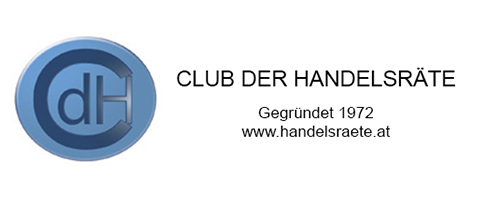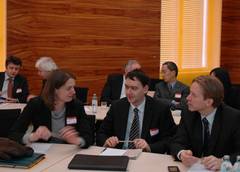IV Austria
Visit to the Federation of Austrian Industries (Industriellenvereinigung, IV): Welcome by I.V. President, Dr Veit Sorger and tour through the historic building at Schwarzenbergplatz
Every second euro of the Austrian economy is earned from exports. The production industry is the driving force behind the economy. Since Austria's accession to the EU the volume of industrial production has doubled to more than EUR 77 billion and the level of industrial exports has increased from 44% of that to 56% (proportion of foreign sales to total sales).
Austria: Land of Industry - Success in CEE
Over the past 10 to 15 years Austria has become one of the most competitive business locations in Europe and home to numerous international company headquarters. Austria is the 7th richest country in the world and the 4th richest country of the EU, Dr Sorger explained to the trade delegates. Austrian companies are among the leading investors in Central Europe and the Black Sea region. They are the biggest investors in Bosnia-Herzegovina, Bulgaria, Croatia, Romania and Slovenia, and hold third place in Slovakia, the Czech Republic and Hungary.
Examples of manufacturing companies operating successfully in CEE are Wienerberger (brick production), OMV (oil / petrochemical), Telekom Austria (telecommunications), Strabag (construction) and Voestalpine (steel production). Austrian companies in the service sector have also established themselves successfully in CEE; such as Erste Bank, Raiffeisen Zentralbank and Bank Austria (banking), and Wiener Städtische and Uniqua in the insurance sector. The Federation of Austrian Industries consists not only of industrial companies but also companies in the service sector, explained Mag. Michael Löwy, head of international relations, IV. Altogether about 3,500 companies are represented in this voluntary association.
Historic Building
At the end of the meeting the trade delegates were given a tour through the building's historic chambers. The House of Industry at Schwarzenbergplatz in Vienna is one of the most outstanding examples of an architectural style called "late historicism". The Vienna "Ringstrasse", the magnificent ring road around the old city centre, had already been completed when, at the beginning of the 20th century, the Vienna Urban Development Fund began to develop and sell the land outside the former ring of fortifications and the Vienna River (a small river flowing through the centre city area of Vienna). This late phase of ?historicism? was marked by the architects Friedrich von Schmidt, Theophil von Hansen, Karl von Hasenauer, Heinrich von Ferstel, and Karl König.
Please find the presentations of this event in our download section (members only)





